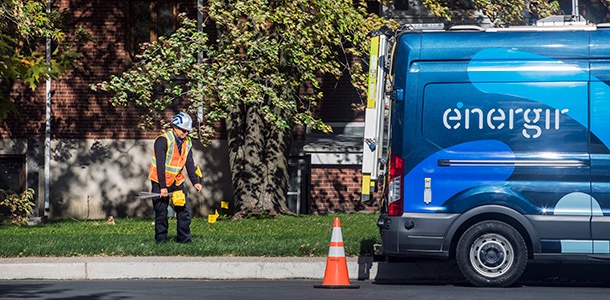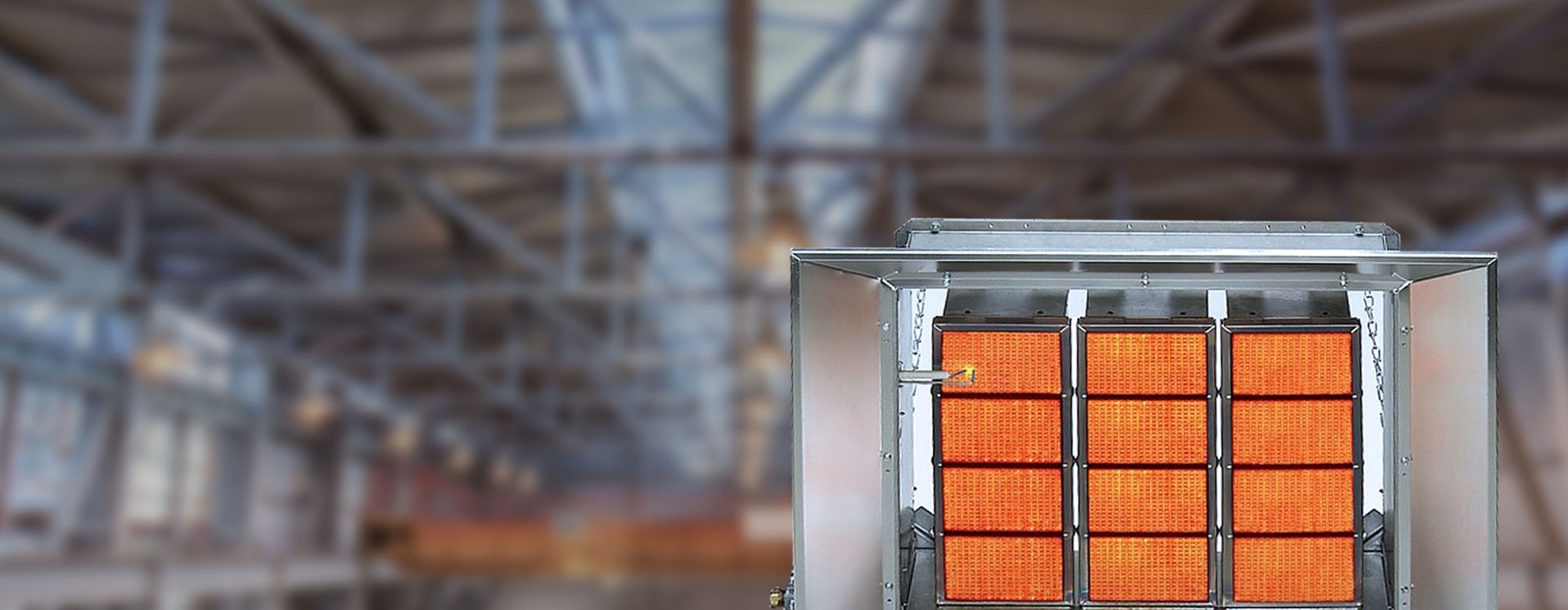Benefits of a natural gas infrared heating system
Designed for large spaces, the natural gas infrared heating system instantly creates a sense of warmth thanks to radiation. Suspended from the ceiling, the high-intensity infrared heating unit is perfect for open spaces with high ceilings; the low-intensity unit transfers heat directly to people and objects without wasting energy on heating the surrounding air. Ideal for keeping your occupants comfortable in ventilated spaces. Warmer, faster, more economical. The natural gas infrared heater is by far the most effective solution for your company, combining the rapid heating of natural gas with an efficient method of heat transmission: radiation.
Chart comparing annual energy costs3 equivalent to 12,755 m3 (100% heating) which represents energy consumption for a small garage, a gas station or a small warehouse
Reduce your energy costs
Cheaper than fuel-oil - Lower your energy bill by installing a natural gas infrared heating system. Not only is natural gas more powerful than fuel-oil, it also costs less.
Consume less, spend less - Realize substantial gains in energy efficiency with a natural gas infrared heating system, which is more efficient than a unit heater because it heats matter, not the surrounding air.
Choose performance
Choose a powerful and efficient technology known for the intensity of its heat. There are several options for infrared heating systems, including low and high-intensity units, ideal for heating large spaces: railway stations and bus terminals, warehouses, garages, gymnasiums, sports arenas and production sites.
See Data Sheet - Low-intensity (PDF)
See Data Sheet (PDF) - Infrared high-intensity


Choose the reliability of Énergir's network
By opting for natural gas, you are choosing Énergir’s reliable and secure distribution network! One of the most modern in North America, it meets the Canadian gas industry’s strictest standards and is monitored day and night, 365 days a year.
Like what you see?
A Énergir expert will make sure that it is the right equipment for your needs and will explain how to proceed to have it installed.
1. The amount of financial assistance is based on expected natural gas consumption, the type of appliance to be installed and the total amount of the investment. The 15% total corresponds to a potential customer who installs a natural gas warm-air furnace with a capacity of 10,000 m3. The rebates are subject to credit approval and eligibility for the natural gas Consumption Rebate Program and the Energy Efficiency Program. The terms and conditions of the program and the amounts of financial assistance are subject to change without notice. A five-year natural gas supply contract is required. Other conditions may apply. The financial assistance will only be paid once the natural gas appliance(s) is(are) installed. The eligibility criteria are listed in the Consumption Rebate Program guide approved by the Régie de l’énergie, a copy of which may be obtained on request.
2. The rebates are applicable to businesses located on the Énergir gas network and equipped with oil-fired central heating appliances, provided that they do not have a heat pump or dual-energy heating system and that the expected new natural gas appliance consumption is at least of 3,600m3 of natural gas. Other conditions may apply. The terms and conditions of the program and the amounts of financial assistance are subject to change without notice. To benefit from this grant, you must sign a contract with Énergir or an Énergir Partner first.
1-2: The cost to switch to natural gas includes a basic connection charge of $300. An additional cost may apply if an extension to the natural gas network is needed, plus an additional contribution based on the expected consumption of natural gas.
3. According to the prices in effect from July 1, 2021 to August 31, 2022. Based on Énergir rates and those of Hydro-Québec approved by the Régie de l’énergie; takes into account base electric consumption and rack price of oil with 2% sulfur including, in particular, transport, distribution and CATS.
